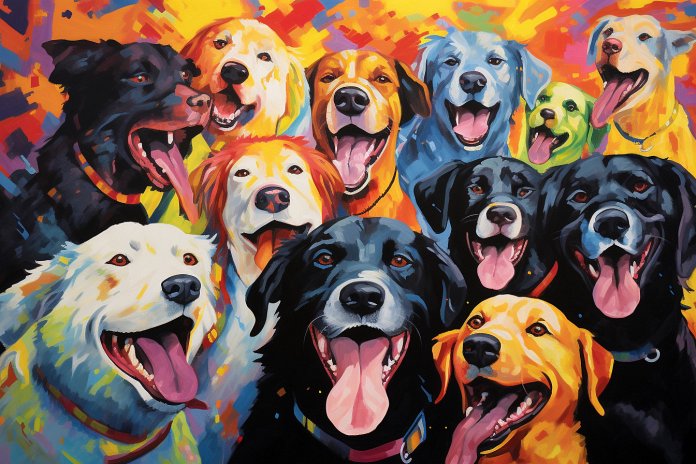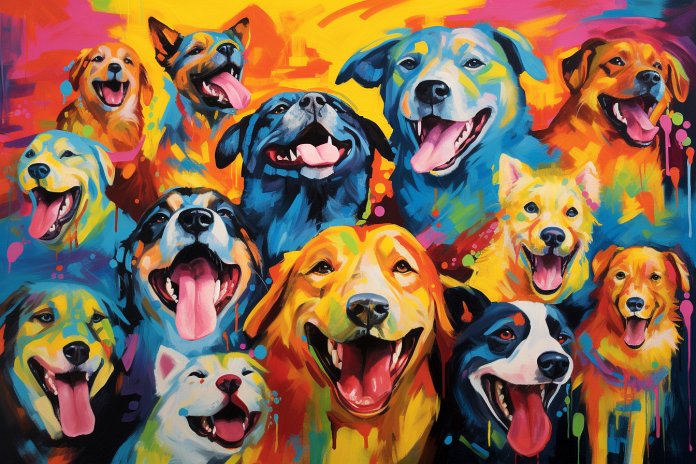
Dogs are known for their consistently happy and enthusiastic disposition. They seem to have a contagious love for life, whether they’re going for a walk, playing with their favorite toy, or greeting their human after a long day. But how much of their temperament is driven by enthusiasm? Can they actually differentiate this unique emotion, or is their behavior more accurately explained by happiness and excitement? In this article, we will explore the ability of dogs to experience enthusiasm. We will discuss the behavioral signs, historical and scientific background, and relevant training techniques. Let’s dive in!
Signs a Dog Feels Enthusiasm
Enthusiasm is often accompanied by feelings of happiness, excitement, anticipation, and genuine interest. While the complexity of this concept may be outside a dog’s emotional range, there are behavioral signs that indicate their ability to feel some form of enthusiasm. For example, if a dog is given a new toy that they love, they may stare at it, wag their tail, jump up, raise their ears, bark or howl (not out of distress, but to show excitement), sniff or paw at the toy, and then start playing with it. Depending on the dog’s usual behavior, they may bring the toy to their owner for a game or prefer to play with it alone. It’s normal for a dog to pant due to excitement, but if they seem to be panting heavily, it’s important to limit their play to prevent overheating.
Body Language
Behavioral signs of enthusiasm in dogs include barking, panting, jumping up, howling, wagging their tail, waiting near a door or window, standing near their food bowl, and getting excited before play.
History of Dogs Feeling Enthusiasm
The study of canine psychology has been ongoing for centuries. Early philosophers like René Descartes believed that dogs were simply machines, but we now know that they have complex emotional lives. Neuroscientist Gregory Burns has conducted research on why dogs are so upbeat and has found that while they may not experience enthusiasm in the same way humans do, they are capable of feeling happiness and excitement, which share similarities with enthusiasm. Anecdotal evidence from dog owners also supports this, as dogs often display excitable behavior in various situations.
Science Behind Dogs Feeling Enthusiasm
Although dogs may not understand abstract concepts like enthusiasm, their brains share similarities with humans. Both humans and dogs have neurotransmitters that transmit messages throughout their bodies, such as serotonin and dopamine. Dogs also have oxytocin, the hormone responsible for feelings of affection, which plays a role in their excitement when reuniting with their owners.
Training Dogs to Feel Enthusiasm
Enthusiasm is an innate feeling, and it may not be possible to train a dog to feel a certain way. However, dogs are naturally positive, and there are techniques that can be used to encourage enthusiastic behavior. It’s also important to help dogs manage their excitability, especially if it leads to overexertion. If a dog seems less enthusiastic than usual, gentle encouragement with toys or treats can help reignite their interest. For rescue dogs or those recovering from illness or injury, patience and understanding are key.
Conclusion
While dogs may not experience enthusiasm in the same way humans do, they are capable of feeling happiness and excitement, which are components of this emotion. Behavioral signs, historical and scientific research, and training techniques all point to dogs having the ability to feel some form of enthusiasm. Understanding and nurturing their innate positivity can lead to a happier and more fulfilled canine companion.
“Enthusiasm is the spark that ignites a dog’s zest for life.”

Tips & Things to Know
1️⃣ Dogs can display enthusiasm through various behavioral signs such as wagging their tail, jumping up, barking, and panting. These signs indicate their positive interest and excitement.
2️⃣ While dogs may not feel enthusiasm in the same way humans do, they are capable of experiencing happiness and excitement, which approximates aspects of human enthusiasm. They display excitable behavior in response to certain situations.
3️⃣ While you might not be able to train a dog to feel a certain way, you can use techniques to encourage enthusiastic behavior. Gentle encouragement, providing objects or activities that usually elicit an enthusiastic response, and rewarding their interest can help foster and reinforce their enthusiasm.
Frequently Asked Questions, Answered ✅
1. What are some behavioral signs that indicate a dog’s ability to feel enthusiasm?
– Some behavioral signs include wagging tail, jumping up, barking, howling, and raised ears.
2. Can dogs differentiate the unique emotion of enthusiasm or are their actions more informed by happiness and excitement?
– Dogs may not feel enthusiasm in the same way humans do, but they are capable of displaying excitable behavior and experiencing happiness and excitement.
3. What historical and scientific background exists on dogs feeling enthusiasm?
– Dogs have always been known for their enthusiastic disposition. Research has shown that while dogs may not feel enthusiasm specifically, they are capable of being happy and excited, which approximates aspects of the human experience of this emotion.
4. What is the science behind dogs feeling enthusiasm?
– Dogs have similar brain structures to humans and both species have neurotransmitters like serotonin and dopamine that contribute to emotions. Dogs also have oxytocin, the hormone responsible for feelings of affection, which plays a role in their excitement and happiness.
5. Can dogs be trained to feel enthusiasm?
– Enthusiasm is an innate feeling in dogs, but there are techniques to encourage and manage their excitability. Gentle encouragement and providing objects of interest can help stimulate enthusiastic behavior. However, if a dog is showing a lower mood or hesitancy, it may require more patience and understanding, especially if they have had a traumatic past or recent illness or injury.